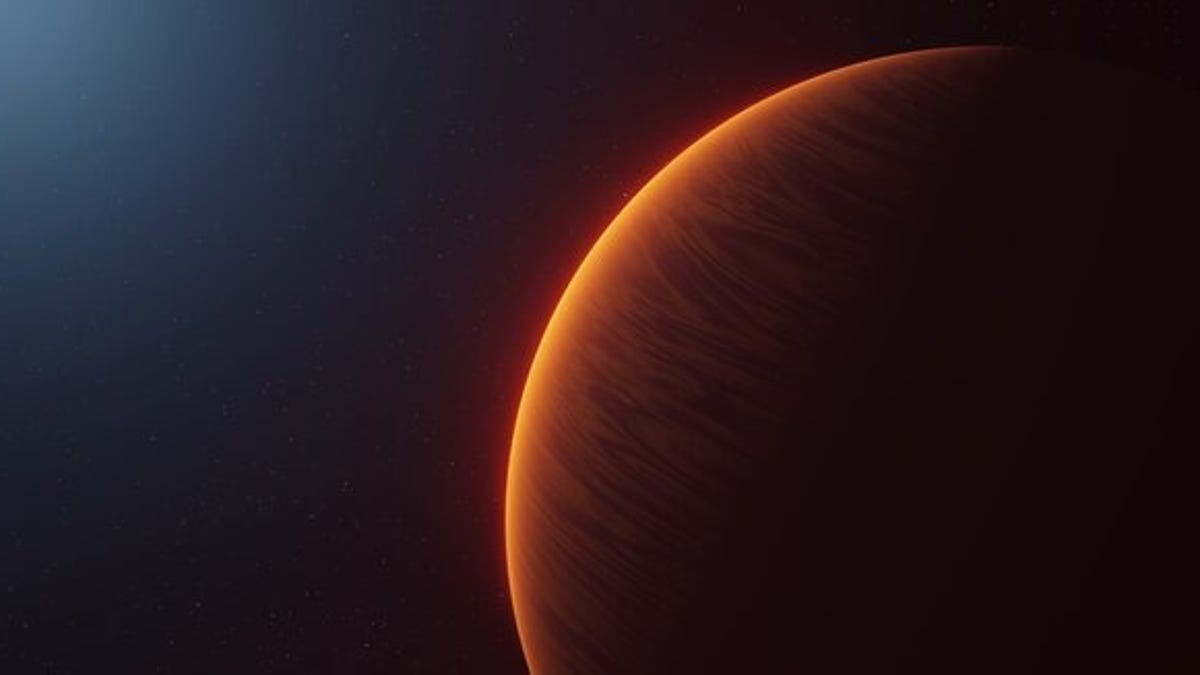Scorching exoplanet is a little like Earth in one key way, scientists say
Our planet has a few talking points to go over with its (very) distant cosmic relative.

Artist's impression of WASP-189b, an exoplanet orbiting the star HD 133112, which is one of the hottest stars known to have a planetary system.
Approximately 322 light-years from Earth, an extreme planet by the name of WASP-189b orbits one of the hottest stars in the universe, HD 133112.
Twenty times closer to its star than we are to the sun, WASP-189b absolutely blisters with a daytime temperature of 5,792 degrees Fahrenheit (3,200 degrees Celsius). The scorching exoplanet is also made of gas and about 1.5 times the size of Jupiter -- something like 1,950 Earths could fit inside it.
Needless to say, since its discovery in 2018, scientists very understandably reasoned that WASP-189b isn't anything like our home orb. But in a paper published Thursday in the journal Nature Astronomy, a team of researchers found a way for Earth to relate to its distant cosmic relative. The two could chitchat about their layered atmospheres, and Earth could gossip about its ozone holes and climate change.
Here on Earth, we have an atmospheric layer called the troposphere that starts at sea level and that holds a ton of water vapor. Clouds, and therefore weather such as rain and snow, originate there. Above that, we have the stratosphere, home to the ozone layer, which protects us from the sun's ultraviolet radiation.
"In the past, astronomers often assumed that the atmospheres of exoplanets exist as a uniform layer and try to understand it as such," Jens Hoeijmakers, an astrophysicist at Lund University and study co-author, said in a statement.
However, upon analyzing WASP-189b by measuring starlight passing through the atmosphere of the intensely heated exoplanet -- with the HARPS spectrograph at the La Silla Observatory in Chile -- Hoeijmakers and fellow researchers found a unique chemical signature to shake up our knowledge of planetary atmospheres. It indicated that the distant orb's atmosphere may have layers like Earth's.
"The gases in its atmosphere absorb some of the starlight, similar to ozone absorbing some of the sunlight in Earth's atmosphere, and thereby leave their characteristic 'fingerprint,'" Bibiana Prinoth, an astrophysicist at Lund University and lead author of the study, said in a statement.
Baking away, WASP-189b emitted signals of iron, chromium, vanadium, magnesium and manganese. But most importantly, Prinoth says, "in our analysis, we saw that the 'fingerprints' of the different gases were slightly altered compared to our expectation. We believe that strong winds and other processes could generate these alterations."
Those adjustments varied across the range of elements detected, similarly to the way Earth's water vapor and ozone are affected differently by natural processes due to atmospheric layering. Voila -- that hints at the existence of layers on WASP-189b, too.
But wait, there's more. The team also uncovered remnants of titanium oxide in WASP-189b's atmospheric shield. "Titanium oxide absorbs shortwave radiation, such as ultraviolet radiation," Kevin Heng, an astrophysicist at the University of Bern and study co-author, said in a statement. "Its detection could therefore indicate a layer in the atmosphere of WASP-189b that interacts with the stellar irradiation similarly to how the ozone layer does on Earth."
So WASP-189b might have its own ozone layer.
"Our results demonstrate that even the atmospheres of intensely irradiated giant gas planets have complex three-dimensional structures," Hoeijmakers said, addressing how the new paper's outcomes could dictate the way exoplanet atmospheres are scrutinized in the future.

